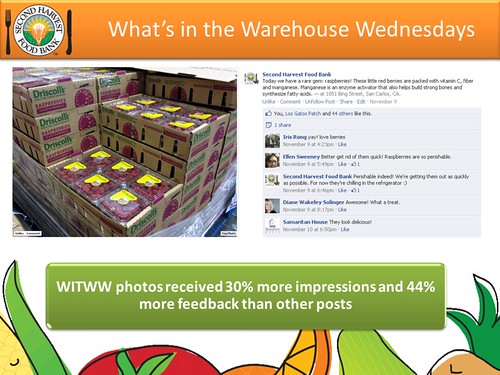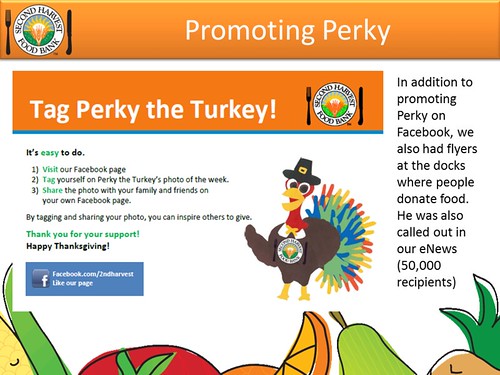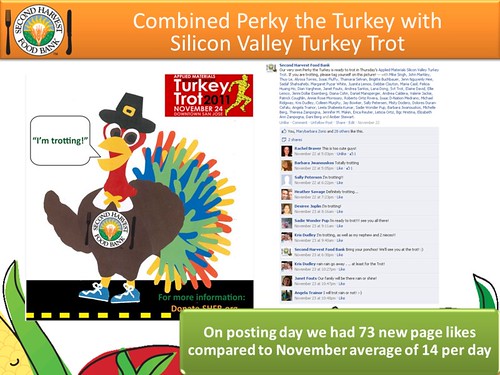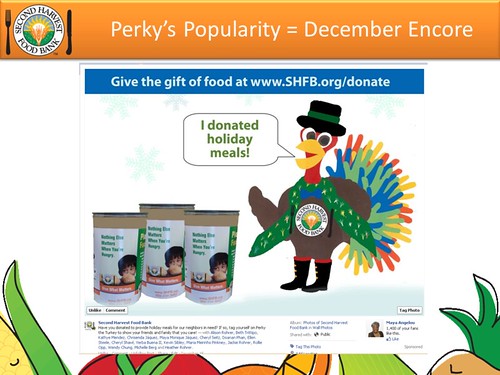
The Cute Dog Theory or more precisely the Cute Animal Theory states that including cute animals in your social media content inspires more people to share the content. If don’t believe that is true, check out this YouTube video from VW of dogs barking the theme from Star Wars as a Superbowl Teaser. In less than a day, it has over 1 million views. The cute animal theory has not gone unnoticed by nonprofits, even those that are not animal welfare organizations, zoos or aquariums are sharing content featuring cute animals on Facebook, Twitter, and YouTube.
And now, mobile.
Best Friends has just launched a fun mobile app. The app lets you take photos of yourself, and uses facial recognition magic to find your dog match. As Noland Hoshino pointed out, it works in a similar way to this app. I showed the app to my kids and it was a huge hit! Not only did they take repeated photos to see what breed of dog would match their photo, they also started to ask if we could adopt a dog.
Source: bethkanter.org via Beth on Pinterest
This app will also allow you to save & share your photo matches with your friends across Twitter, Facebook or on Best Friend’s User Generated Content Dog Wall – that is part of its Invisible Dogs Campaign, a multi-channel social media campaign to spark the Invisible Dogs grassroots movement with the ultimate goal of no more homeless pets. The App also provides: adoptable dog search by zip code, simple giving to help homeless pets, and their grassroots pledge to start seeing invisible dogs. The dual purpose of the app is to raise awareness of the thousands of dogs waiting in shelters to be seen and adopted – and to have a little fun at the same time – perhaps a party or drinking game.
I asked Best Friends Marketing Coordinator Claudia Perrone how they were measuring success. The ultimate KPI, of course, is dog adoptions. But they are looking at associated metrics such as: downloads, user comments, sharing, and google analytics to show dog searches… then data collection (emails and mobile optins), microdonations, and buzz via earned media. Says Perrone, “We will also look at app users who came into the BFAS fold over time (email database, do they keep giving, etc). The bottom line is that it is a fun addition to our Invisible Dogs campaign and our first test into the mobile app world.”
The Android version is coming soon!
Update: Ted Fickes wrote this terrific post about how cute animals also help fundraising appeals!
Even Cute Fictional Animal Characters Work
That’s what Michelle Berg, New Media and Events Manager, at the Second Harvest Food Bank in Silicon Valley discovered. Michelle, was a participant in the Measuring Networked Nonprofit peer learning groups supported through my work as Visiting Scholar at the Packard Foundation. Each participant organization designed and launched a measurement action learning project that used measurement to improve results for networked approaches and social media.
Michelle’s project was focused on measuring engagement through multiple channels, but especially Facebook.
Goal: Increase Facebook engagement to create a more educated online community that is ready for more tangible calls to action.
Specific measurable objectives included:
Increase page likes to 12,000 by 12/31/2011 (achieved on 12/1/11)
Increase post feedback by 300% in September and by 200% in following months
Increase post sharability
Strategy: Create more fun and sharable content and build atmosphere conducive to supporter-initiated posts.
Tactics: Measure what content works, especially during Online Action Challenge, and implement throughout 2011 holiday season. Use visuals to tell our story and reach friends of fans.
Primary measurement tool: Facebook Insights
In September, they ran their 3rd social media challenge, in this case, the Oracle Online Action Challenge. Oracle made donations for all online actions (likes, comments, RTs, photos, etc) during Hunger Action Month, reaching a maximum donation of $25,000. Creation of content and user interactions were considerably higher than in other time periods. They used measurement data from this month to guide efforts throughout the critical holiday season.
Michelle mentioned that this was their largest online donation action from a sponsor, but they had tested the idea with several smaller sponsors. Says Michelle, “The key to your results so you can include this information for a larger sponsorship.”

Michelle set up an editorial calendar for all campaigns for all channels over the next several months and focused on testing and measuring different content formats and topics on their Facebook brand page to see what generated the most engagement. Michelle knows her audience very well because she is also responsible for giving tours of the facility. The Food Bank uses its donations to acquire fresh fruits and vegetables, and Michelle notes that people are often surprised when they these food donations. “The perception,” says Michelle, is that Food Banks only give canned tuna or Mac and Cheese. ” So, Michelle started a regular feature called “What’s in the Warehouse Wednesdays” that was effective generating conversations online.

One of the campaigns for the Oracle effort during Hunger Awareness Month was “Hunger: Put a Fork in It.” At the Food Bank, they encouraged visitors to pose with the giant forks and upload their photos to their Facebook pages. In addition, they began to notice fans posting their own versions of the photos and some included photographs of their pets with forks. Those particular photos received higher interaction scores. This gave Michelle and her team an idea: What if they had a cute animal mascot for their holiday turkey donation drive?

They came up with “Perky the Turkey,” who was the mascot for their Thanksgiving Turkey Donation Drive. They used Perky across channels to invite people to donate a Turkey for a Thanksgiving meal for Second Harvest to distribute. On Facebook, Perky the Turkey asked their fans to tag themselves on Perky’s photo and let their friends know they donated a Thanksgiving meal. While the ultimate metric was the number of turkeys donated, the Perky content was a hit with their fans. And, Second Harvest made their goal of 12,000 donated turkeys one month a head of schedule.

Throughout the month of November and leading up to Thanksgiving, they used Perky the Turkey to promote food donation efforts. They put sneakers on him to encourage fans and supporters to sign up for the annual fundraiser, a “Turkey Trot” – a run to raise awareness and dollars for the Food Bank.

Perky the Turkey’s popularity continued into December. So he made an encore in the month of December, promoting Christmas food donations.

Now that the holiday season has ended, they will continue to consistently measure online activities to create content that shares their story in an engaging way and inspires food donations. Perky may become a year-round fixture or lead to another sharable ambassador for the Food Bank. As they reflected on the results of campaigns and the measurement data, some areas of improvement will include formalization of cause marketing guidelines and continued testing of content that engages.
What have you learned from your measurement data that helped you plan and implement successful multi-channel campaigns?
